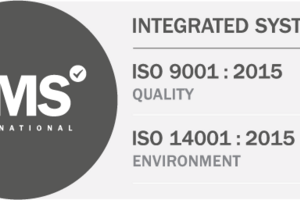29 November 2018
Lighting for special needs: Key factors to consider
With the number of pupils with special educational needs (SEN) increasing for a second consecutive year to 14.6%, there’s never been a more important time for schools to provide nurturing learning environments.
The majority of pupils with SEN are educated in mainstream schools, where acoustics, equipment, classroom layout and wayfinding all play a role in helping them reach their full potential. Here, Greenlite Group outlines how good lighting design is also essential when it comes to creating a supportive learning environment.
- A flexible approach. Children with SEN and disabilities will have varying needs, and lighting design needs to cater for this. A student with dyslexia, for example, may benefit from different lighting to a child who is on the autistic spectrum.
- Individual control. For some pupils with impaired vision, task lighting may help provide clarity. Others who are more sensitive to light may benefit from individually controlled lamps, which offer variable levels of light intensity.
- Clarity is key. For a child with a hearing impairment, bear in mind that clear sight of the teacher is essential for lipreading and signing. Ensure lighting doesn’t cast shadows across vital areas of the classroom.
- Safety first. For children with sensory impairments or physical disabilities, safety is vital. Lighting needs to enable students to navigate their way around, without risk of accidents.
- Avoid glare. Beams of sunlight, reflections on shiny table tops and glare on display screens can all be distracting and confusing. Use low glare light fittings, alongside window blinds to control the impact of the sun’s rays.
- Consider mobility needs. Automatic sensors, which switch off lighting when no movement is detected for a set period of time, can be a great energy saving measure. However, they may not be appropriate if children have mobility issues. On the other hand, motion activated lighting can also be a positive addition for pupils who struggle to activate traditional switches.
- Keep it cool. Consider the type of bulb that’s used. LEDs don’t get hot, which means they won’t affect the ambient temperature. That means they can offer better comfort levels than heat-generating halogens.
- Take control. Dimmer switches enable teachers to illuminate or darken a space at the touch of a button, depending on whether they want to calm or stimulate. Lighting controls can be particularly beneficial for children with autism, who are strongly affected by their sensory environment and need calm.
- Consider fluorescent sensitivity. Research suggests that fluorescent lighting isn’t appropriate for students with autism, who can be hypersensitive to the flicker or hum emitted. It’s believed this can trigger headaches, eye strain and repetitive behaviour.
LED lighting can be fitted in both modern and old school buildings with minimal fuss. It’s also energy efficient, meaning lower energy bills and public sector institutions may qualify for interest-free Government funding, through Salix Finance Ltd. For more information please contact Greenlite Group, on hello@greenlitegroup.co.uk


